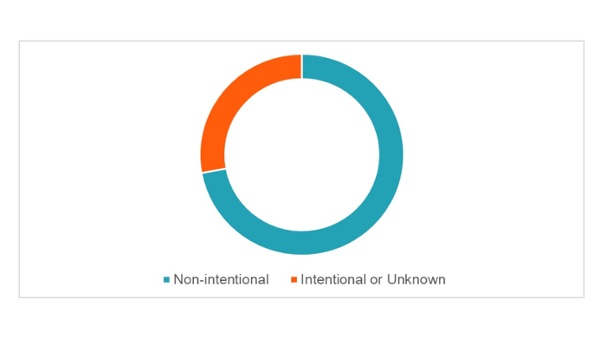Section 4 – Findings
There were 86 water-related fatalities in children and young people under 25 years of age that occurred in Wales between 2013 and 2022.
62 deaths were non-intentional (‘accidental’ or natural causes) and 24 were either intentional (suspected suicide or deliberately inflicted) or unknown (fig. 1).
Less than five non-intentional water-related fatalities of Welsh-resident children under 18 years of age occurred outside of Wales during the same ten-year period. This figure is unknown for the 18-24 years age group.
This report will focus on the 62 non-intentional water-related fatalities in children and young people that occurred in Wales, with findings presented by time, person, and place.
Fig 1. Proportion of non-intentional (‘accidental’ or natural causes), intentional (suspected suicide or deliberately inflicted) and unknown water-related fatalities in children and young people, Wales, 2013-22. (Produced by CDRP, using CDRP and WAID data).
